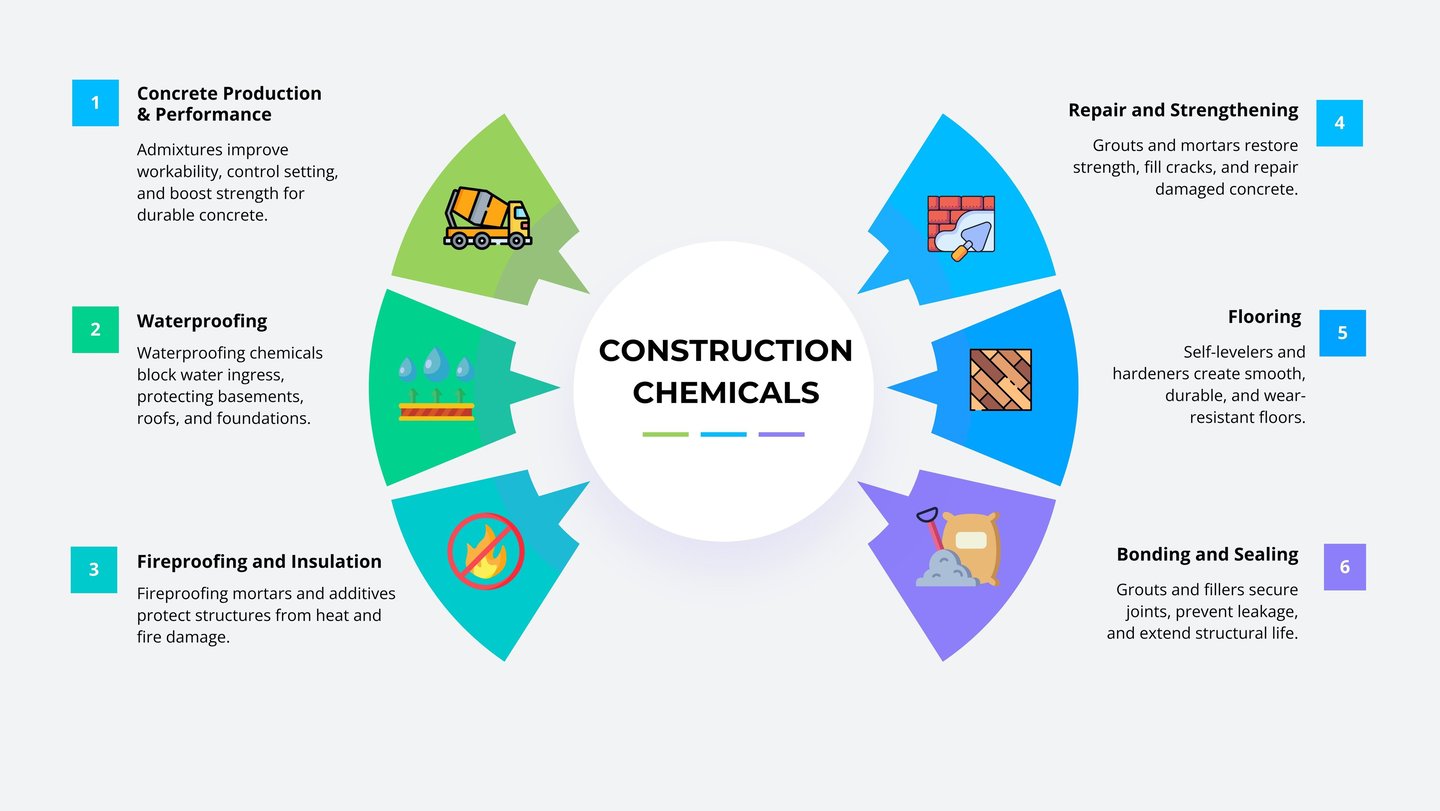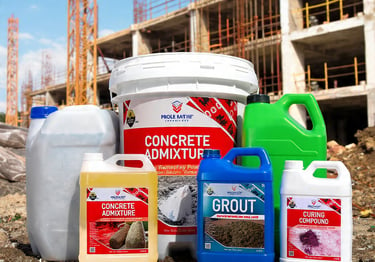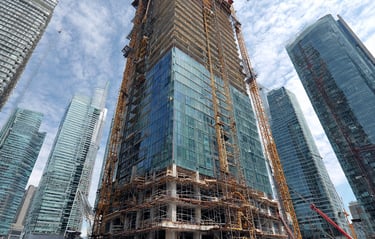

Construction Chemicals Technology and Formulations
High-performance construction chemicals formulated through advanced polymer technology, controlled admixture chemistry, and application-driven durability engineering.
Chemistries


Our services
Our services
Market
Construction Chemicals Market
USD - 48 Billion in 2024
CAGR 5 % 2025-2030
USD - 72 Billion by 2030




Technology
Construction Chemicals
Construction chemicals are at the heart of modern infrastructure, ensuring concrete structures are stronger, more durable, and resistant to environmental stresses. They play a critical role across sectors such as residential housing, commercial buildings, transportation networks, industrial facilities, and mega infrastructure projects. Each application demands formulations engineered not only for compliance with quality standards but also to deliver performance attributes such as workability control, waterproofing, crack resistance, and long-term structural integrity.
At the foundation of every construction project are the core chemical systems that enhance concrete performance and protection. Admixtures such as plasticizers and superplasticizers improve workability and strength; retarders and accelerators control setting time; air-entraining agents increase freeze–thaw resistance; and shrinkage reducers minimize cracking. Waterproofing agents safeguard structures from moisture ingress, while grouts, repair mortars, and densifiers restore and reinforce damaged or high-load areas. Specialized products such as self-leveling floors, curing compounds, and fireproofing mortars further extend functionality and safety.
Construction chemicals are broadly classified into categories such as concrete admixtures, waterproofing agents, repair and grouting systems, flooring and surface hardeners, curing compounds, and fireproofing/insulation materials. Each class is tailored to address specific challenges — from improving concrete performance in high-rise towers, to preventing water damage in basements and terraces, to ensuring safety and durability in tunnels, bridges, and industrial facilities.
With sustainability and innovation driving the market, the focus is shifting toward low-VOC formulations, bio-based admixtures, and advanced mineral systems that reduce the carbon footprint of construction while enhancing performance. The formulation of construction chemicals is a precise integration of chemistry and engineering — designed to secure strong, efficient, and sustainable infrastructure for future generations


Global Formulations Consultancy
Chemical Innovation & Technical Excellence
Expert formulation development, process optimization, and technical consulting across multiple industries.
Get in touch with our experts.
Follow
Industries
Household and Industrial Cleaners
Construction
Cosmetics and Personal care
Pharmaceuticals and Healthcare
Aerosols
Fragrance and Flavors
© 2018. All rights reserved.
Services
Chemical Reaction Engineering -CRE
Chemical Process Engineering - CPE
Email : consulting@globalformulation.com
Phone : +91 8169102990
+91 9819548320